40s Films –50s Films – 60s Films – 70s Films – 80S Films – 90s Films – 2000S Films
Now that another decade is over, it’s time to look back at the Australian films released in the last ten years. Over 500 Australian films (more than any other decade) were released in the 2010s – either at the cinema, at a festival or on one of the new streaming platforms (see list). I must admit that it hasn’t been my favourite decade for Australian films (that would be the 90s or the early 2000s), but I have enjoyed many of the films, and I recognise that there have also been a lot of films made for people with different tastes to mine, such as action-fans, thrill-seekers, gorehounds, etc. As there should be.
The film world has continued to change rapidly in the last ten years, and a number of factors have led to a change in the status of the feature film. Here are a few that come to mind:
- The boom in quality long-form television is the most significant development.
Not only has the rise in streaming deceased the audiences in cinema, but many of Australia’s top directors, actors and other film professionals have stopped making Australian feature films and now make films in the US or UK, or make quality TV series that can be sold around the world. Many established Australian directors made the shift to Hollywood, and many others (such as Jocelyn Moorhouse, David Caesar, Peter Duncan, Rachel Perkins and Tony Ayres) are now making top Australian TV series (like Rake, Mystery Road, Les Norton, Total Control, and most recently, Stateless); - The rise of the superhero blockbuster has eclipsed both drama and comedies at cinemas, and these blockbusters need the kind of money only available in Hollywood;
- On the other hand, many small local films, which cannot find cinema distribution, have been able to find streaming platforms (Ozflix, Amazon, Apple etc) to make their films available to the public. So many new film-makers have been able to release films that would have been unlikely to get a cinema release.
- Improvements in technology have made film-making equipment much cheaper, allowing more low-budget feature films to be completed.
A few trends in Australian films over the last ten years are noticeable:
- There continued to be many films made in Australia for the international market, which look like films made in America (or Europe or Asia). These included a number of high profile films made in Australia by Australian directors which told foreign stories (from Baz Luhrmann’s The Great Gatsby to Anthony Maras’s Hotel Mumbai). I have included some of these below in the section Australian films that don’t look Australian.
- Films on Indigenous themes continued to be among the most interesting of the decade;
- There were a number of critically acclaimed films made on dark themes of evil and violence (see Art of Darkness).
- The horror boom continued, with over 100 horror genre films released in the decade. While few of these performed well at the box-office, many did very well on streaming services, and a large number of horror films are amongst the Australian films of the decade with the most votes on IMDB.
- Similarly, there were more Science Fiction and Fantasy films released than in previous decades;
- There have been fewer successful comedies and rom-coms than in previous decades;
- While many first-timers have managed, with the aid of cheaper new technology, to produce films, the decade saw fewer films from established directors, who either left to make television programmes, or only managed to make a single film during the whole decade.
Examples of established film-makers who made only one film in the 2010’s are Baz Luhrmann, Alex Proyas, Jocelyn Moorhouse, PJ Hogan, Rob Sitch, Michael Rymer, Rowan Woods, Craig Monahan, Shirley Barrett, David Caesar, and Sue Brooks.
Those who made more than two were Rolf De Heer, Stephan Elliott, Rachel Perkins, Gregor Jordan, Warwick Thornton, and Cate Shortland.
So here are my 60 significant films of the ’00s, in the following sections:
- The First Eleven – Most Popular Australian Films of the 2010s
- Best Indigenous Themed Films
- The Art of Darkness (Violent and scary, but arty)
- Family Fun (Films for kids and young people)
- Best Comedies
- Films about Love and/or Sex
- Best Action, Thrillers, Sci-Fi and Horror Films
- Best Dramas
- Australian films that don’t look Australian
- What About? (Films that were popular with critics or fans that I didn’t include in this survey – this includes a LOT of oz-horror flicks)
Lastly there there three lists at the end of the page:
- Critics’ 50 Top-rated Australian films of the 2010s;
- Ozflicks 50 Favourite films of the 2010s;
- Domestic Box Office Figures for 2010s Australian Movies – the Top 50.
Let’s start with the films that most people have seen:
The First Eleven – Most Popular Australian Films of the 2010s
These 11 films were either popular at the box-office, or are among the most popular in terms of votes on IMDb (and often both). A balance of these two criteria (plus IMDb rating a little) was used to place them in the following order of popularity.
1. Mad Max: Fury Road (2015) (George Miller)

In post-apocalyptic Australia, Max Rockatansky escapes from the clutches of a crazy warlord, Immortan Joe, and tries to make it to safety, accompanied by Imperator Furiosa, one of Immortan Joe’s women ex-lieutenants, and a handful of others. This fourth episode of George Miller’s series of post-apocalyptic action flicks, is light on for plot and character but has some amazing vehicles, costumes and action sequences in what is basically two hours of driving, fighting and exploding vehicles. Despite being filmed in Namibia due to weather conditions in Australia, the film is implicitly set in Australia. For the first time, Max is not played by Mel Gibson, but by Tom Hardy, who has to share the glory with Charlize Theron, who plays a woman warrior escaping from the warlord’s clutches. The film was nominated for the Academy Awards for Best Film and Best Director and won six production Oscars, more than any other Australian film. This was the Australian blockbuster of the decade. (For further information, see here.)
2. Lion (2016) (Garth Davis)
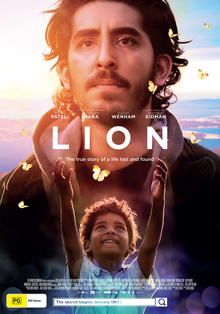
The true story of a small Indian boy, Saroo, who falls asleep on a train and wakes up in Calcutta with no idea of the name of his village or how to get back there. He is eventually adopted by an Australian couple, but as an adult becomes obsessed with finding his real family. This moving and generally upbeat film about the effects of inter-country adoption on both the children and the adopting parents, tells us more about India than Australia. It did very well in Australia and worldwide. (For further information, see here.)
3. Sanctum (2011) (Alister Grierson)

An underwater cave diving team experiences a life-threatening crisis during an expedition to the unexplored and least accessible cave system in the world. Sanctum starred Richard Roxburgh and Rhys Wakefield, and was inspired by the film’s co-writer Andrew Wight’s experience with a 1988 cave diving expedition in Australia that resulted in 13 cavers becoming trapped in one of the world’s largest underwater cave systems in Nullarbor Plain after a freak storm collapsed the entrance. Filmed in 3D on a $30 million budget, the film gained worldwide release through Universal Studios, and made over $100 million. (For further information, see IMDb, Wikipedia, M&D, Urban Cinephile.)
4. The Water Diviner (2014) (Russell Crowe)
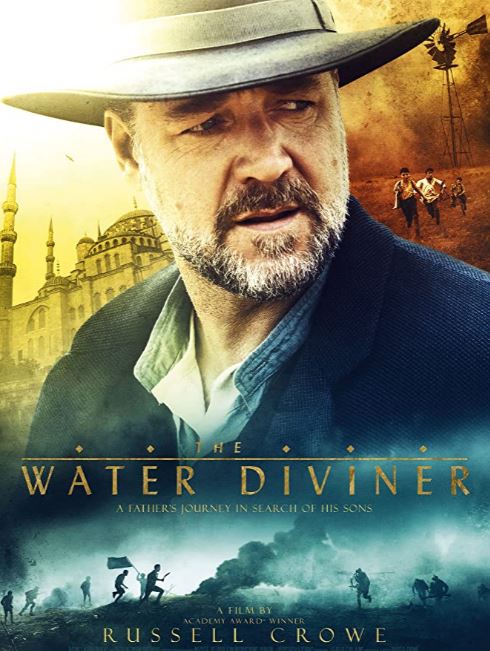
An Australian father travels to Turkey after World War 1 to find the bodies of his three sons who he believes died at Gallipoli. The film marked Russell Crowe’s debut as a director, and he also starred in the film, which had some success around the world. Despite some controversies about the film’s historical leanings, the film won the AACTA Best Film Award. (For further information, see IMDb, Wikipedia, Urban Cinephile.)
5. The Dressmaker (2015) (Jocelyn Moorhouse)
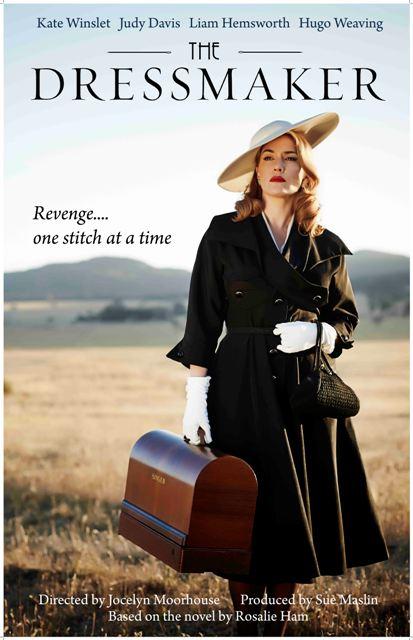
Adapted from a Rosalie Ham novel, the story centres on a fashion designer in the 1950s who returns to her tiny outback home town to face her childhood demons, as well as her aging half-demented mother. This tragi-comedy starred Kate Winslett and Judy Davis, and was a hit with Australian audiences, and marked a happy return to Australian film for Jocelyn Moorhouse. The film has a wonderful troupe of mainly Australian support actors, including Hugo Weaving, Sacha Horler, Barry Otto, Kerry Fox, as well as handsome newcomer Liam Hemsworth, playing memorable and often bizarre characters. (For further information, see here.)
6. Red Dog (2011) (Kriv Stenders)

A family comedy-drama about the adventures of a kelpie (an Australian red sheep dog), who enters the lives of many characters in an isolated mining town. This heart-warming film, based on a true story, was very popular in Australia. (For further information, see here).)
7. The Sapphires (2012) (Wayne Blair)
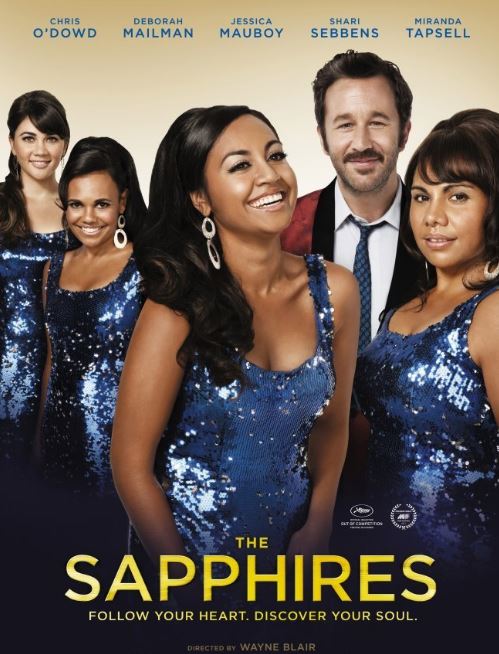
The true story of four young Aboriginal women who formed a Motown-style girl-group and went to Vietnam to entertain Australian troops during the Vietnam War. The film starred Deborah Mailman, Jessica Mauboy, Shari Sebbens, Miranda Tapsell, and Irish funnyman Chris O’Dowd. It is one of a number of recent films on Indigenous themes that exudes positivity and transcends the problems many Aboriginal and Torres Strait People face and have faced. The first film by Aboriginal actor Wayne Blair, this was popular at the local box office. (For further information, see here.)
8. Tomorrow When The War Began (2010) (Stuart Beattie)

Eight teenagers on a camping trip are cut off when a foreign country invades and takes over much of Australia and turns their hometown into a prison camp. The teenagers begin a resistance campaign. Based on a popular novel, it’s a well-made adventure film with a bunch of enthusiastic and photogenic young actors, and was popular in Australia. (For further information, see IMDb, Wikipedia, M&D, Urban Cinephile.)
9. Animal Kingdom (2010) (David Michôd)

This is a gripping believable story of Melbourne’s criminal underworld, of working-class crims and the rough, tough mum who loves them, of innocent youths who get gradually drawn into the criminal world, of corrupt cops and good cops trying to outdo each other, and of the difficulty of escaping this world once you’ve been caught up in it. This film won the AFI awards for Best Film and Best Director, and catapulted lead actors Ben Mendelsohn, Joel Edgerton, and veteran Jacki Weaver into successful Hollywood careers. (For further information, see here.)
10. Ladies in Black (2018) (Bruce Beresford)

The lives of two woman working at a high class department store in Sydney in the 1950s are changed when they make friends with a fashionable newcomer from Europe. Veteran Aussie director Bruce Beresford has created a lively period film that follows the lives of several Australian women (and a few men) in the changing world of 1950s Australia, a time when technology, fashion and society were beginning to change at an increasing rate. (For further information, see here.)
11. Ride Like a Girl (2019) (Rachel Griffiths)

The true story of Michelle Payne, the first female jockey to win the Melbourne Cup in 2015. This is a beautifully made story of a young woman’s perseverance and success in overcoming the physical challenges and entrenched prejudice to triumph in a male-dominated sport, and it topped the local box-office in 2019. Teresa Palmer is wonderful as Michelle, Sam Neill is great as always playing her obsessed father who is reluctant to forgive her quest for success, and Stevie Payne, who is the real Michelle Payne’s downs-syndrome brother, steals the show playing himself, as he stands by Michelle through thick and thin. (For further information, see here.)
Best Indigenous Themed Films
There were more films made about the Aboriginal experience in Australia in the 2010s, and these included some of the most notable films of the decade. New Indigenous directors Wayne Blair and Catriona McKenzie joined Rachel Perkins, Ivan Sen and Warwick Thornton to create to create entertaining, exciting and moving films featuring Aboriginal people in lead roles. In addition, Rolf de Heer made his third interesting Indigenous film, and Jennifer Kent’s second film about a convict woman also deals powerfully with the massacre of Tasmania’s Aboriginal population in the 1800s. They are listed in chronological order:
Mad Bastards (2010) (Brendan Fletcher)
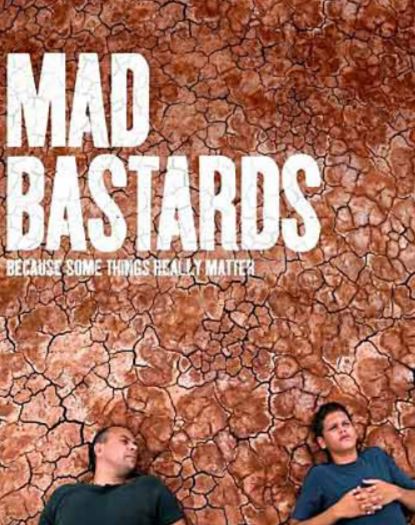
An Aboriginal man travels from Perth to the Kimberley to meet the 13 year-old son he’s never met and reconcile with the mother. This film offers a new, positive take on the problems facing many Aboriginal people in Australia today. It’s an interesting, positive and moving portrait of a community in an isolated and beautiful region of Australia. (For further information, see here.)
The Sapphires (2012) (Wayne Blair)

The true story of four young Aboriginal women who formed a Motown-style girl-group and went to Vietnam to entertain Australian troops during the Vietnam War. The film starred Deborah Mailman, Jessica Mauboy, Shari Sebbens, Miranda Tapsell, and Irish funnyman Chris O’Dowd. It is one of a number of recent films on Indigenous themes that exudes positivity, and it transcends the problems many Aboriginal and Torres Strait People face and have faced. The first film by Aboriginal actor Wayne Blair, this was popular at the local box office. (For further information, see here.)
Satellite Boy (2012) (Catriona McKenzie)

A young Aboriginal boy lives in an abandoned drive-with his grandfather, played by David Gulpilil, who is trying to bring up the boy with a knowledge of his culture. When a mining company threatens to destroy his home, he sets off by bicycle with a young friend to travel to the far off mining office to stop the development. Starring Cameron Wallaby, Joseph Pedley, and David Gulpilil, this is a heartfelt and somewhat hopeful film about a young Aboriginal kid in a tough situation. (For further information, see here.)
Mabo (2012) (Rachel Perkins)
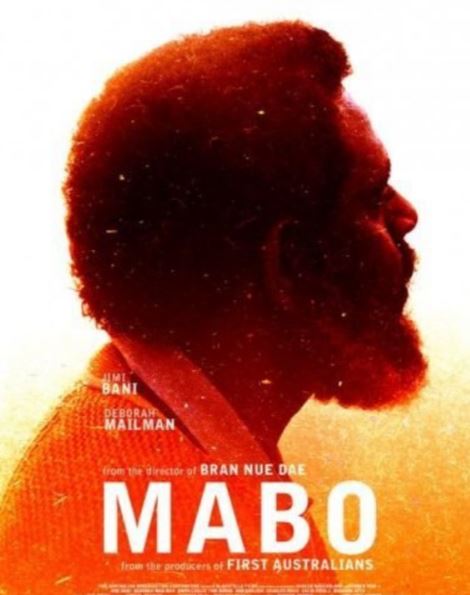
This biopic, by Australia’s most prolific Aboriginal director, first appeared on ABC TV, and tells the true story of Eddie Mabo, the Torres Strait islander whose protracted court case was a landmark land-rights case for indigenous Australians. The film shows the struggles and injustices Mabo went through. It’s an informative film about an important issue, and Deborah Mailman puts in another strong performance. (For further information, see IMDb, Wikipedia, FilmBlerg, Sue Smith (SMH), Richard Watts (Screen Hub).)
Charlies Country (2013) (Rolf de Heer)

David Gulpilil gives an award-winning performance as an elderly Aboriginal man living in Arnhem land, who is not content with living on the fringes of white consumer culture under whitefella laws, and yearns to return to the traditional life on the land he remembers from his youth. Gulpilil expresses the anguish of Aboriginal people in a country dominated by an alien culture, and won another AACTA best actor award, proving what a fine actor he has been for over 40 years.(For further information, see here.)
Mystery Road (2013) (Ivan Sen)

Aaron Pedersen plays an Aboriginal detective who returns to his outback hometown where he starts to investigate the murder of a young Aboriginal girl. This is an absorbing crime-thriller and is is another of Ivan Sen’s excellent films examining contemporary Aboriginal life in Australia. The film has spawned a sequel (below) and an award winning TV series, also with Pedersen. (For further information, see see here.)
Spear (2015) (Stephen Page)

A young Aboriginal man reconciles ancient tradition with the modern, urban world, in an unusual film of dance and music, featuring Hunger Page-Lochard and the famous Bangarra Dance Theatre. Directed by Stephen Page, artistic director for the Sydney-based theatre, it is a film without dialogue, and its beauty will appeal most to lovers of dance and movement. (For further information, see IMDb, Wikipedia, Guardian, Urban Cinephile, Trailer.)
Goldstone (2016) (Ivan Sen)
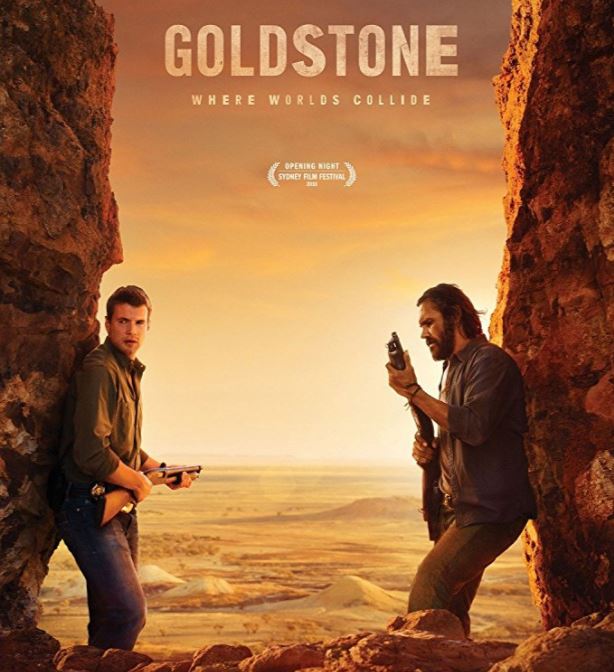
This is an excellent sequel to Ivan Sen’s Mystery Road, and sees the return of Aboriginal detective Jay, played with a wonderful laid-back sincerity by Aaron Pedersen, battling depression and drink, but on the case of a missing tourist. He unearths a mountain of corruption, drime and exploitation, with David Wenham and Jacki Weaver playing the bad guys. (For further information, see here.)
Jasper Jones (2017) (Rachel Perkins)
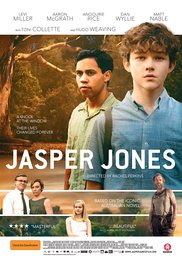
A young white boy Charlie, and an older mixed race boy, Jasper Jones, try to investigate the death of Jasper’s white girlfriend. This adaptation of a popular Craig Silvey novel about a young boy in 1969 covers a lot of ground – murder-mystery, racial prejudice in small-town Australia, young love, family secrets, infidelity and community. (For further information, see here.)
Sweet Country (2018) (Warwick Thornton)
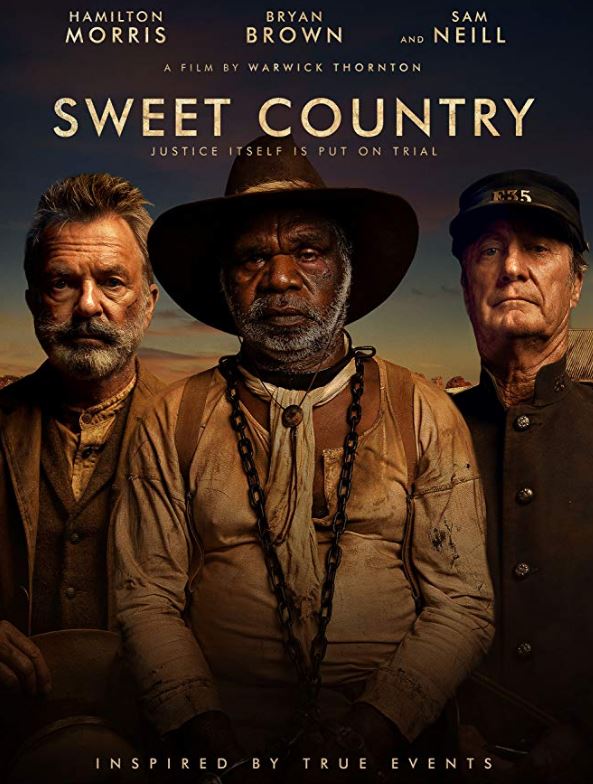
An Aboriginal man in the 1920s is pursued by a policeman across rough country in the Northern Territory for killing an aggressive white neighbour in self-defence. Beautifully filmed with strong performances from the main characters, the film illustrates the racism at play in the outback throughout most of Australian history. Warwick Thornton’s second film deservedly swept the main AACTA awards in 2018, winning the best film, best director and best actor awards. (For further information, see here.)
Top End Wedding (2019) (Wayne Blair)

An young Aboriginal corporate lawyer returns to Darwin with her white boyfriend to marry in her hometown, only to find her mother has left to return to her own roots. Wayne Blair’s followup to The Sapphires, mixes wedding-rom-com with a serious look at belonging for the many Indigenous people from mixed or broken families. While the first half of the film relies too much on overseas rom-com stereotypical situations, the film become more grounded in the second half, when bride-to-be Lauren, played by Miranda Tapsell, tracks down her mother who has gone to reconcile herself with her parents on the Tiwi Islands. (For further information, see IMBd, Roger Ebert, Guardian, FilmInk, Variety.)
The Nightingale (2019) (Jennifer Kent)
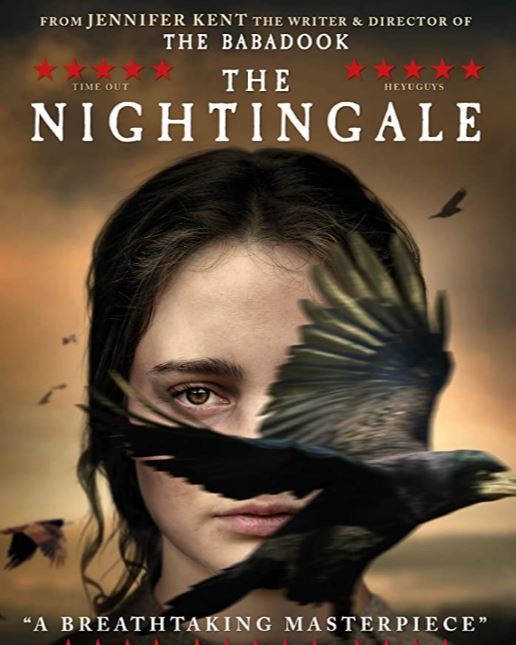
In Tasmania in 1825, Clare (Aisling Franciosi), a 21-year-old Irish convict sets out with a gun and a young Aboriginal tracker Billy (Bykali Ganambarr) to pursue and seek revenge on the three soldiers who killed her husband and baby. Jennifer Kent’s second film is is a powerful, moving and sometimes shocking depiction of the violence that permeated Australia’s colonial era. Though the film starts by depicting the violence of British soldiers against convicts and women, it also portrays the genocidal violence of soldiers and settlers against the Tasmanian Aboriginal peoples, so that Clare comes to understand that the Aboriginal people are suffering even more than the Irish, the convicts or even than Irish convict women. The film deservedly won the AACTA Best Film Award. (For further information, see here.)
Art of Darkness
Several films were made by first-time directors which attracted praise for their artistry and skill, but also looked at dark and violent subjects. The following films are the most prominent of these. They are listed in chronological order:
Animal Kingdom (2010) (David Michôd)

This is a gripping believable story of Melbourne’s criminal underworld: of working-class crims and the rough, tough mum who loves them, of innocent youths who get gradually drawn into the criminal world, of corrupt cops and good cops trying to outdo each other, and of the difficulty of escaping this world once you’ve been caught up in it. This film won the AFI awards for Best Film and Best Director, and catapulted lead actors Ben Mendelsohn, Joel Edgerton, and veteran Jacki Weaver into successful Hollywood careers. (For further information, see here.)
Snowtown (2011) (Justin Kurzel)
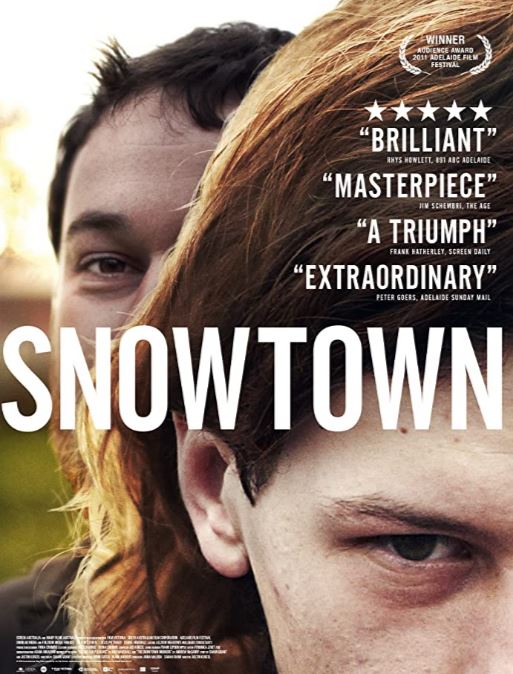
This is a chilling recreation of the horrendous serial murders that happened in and around Adelaide, before eight bodies were found in barrels in the little town of Snowtown in 1999. While director Justin Kurzel won the AACTA Best Director Award for this film, and the film won many other awards, the film is very violent and confronting. Daniel Henshall’s performance, as the leader of the gang of underprivileged youth, also won the AACTA Best Actor award. (For further information, see IMDb, Wikipedia, M&D, Urban Cinephile, Australian Screen, Ozflix)
The Babadook (2014) (Jennifer Kent)

A young widow, who remembers her husband’s violent death, finds that her son is terrified of a monster in their house: the Babadook. This creepy, horror-thriller won the two top AACTA awards, for best film and best direction, and impressed mainstream critics as well as horror-fans. Essie Davis and Noah Wiseman both give stellar performances. (For further information, see IMDb, Wikipedia, Guardian, Urban Cinephile, Ozflix)
The Rover (2015) (David Michôd)

A well-made, but dark and violent dystopia, this second feature from the director of Animal Kingdom explores similar themes of damaged and violent individuals in bleak settings. This film is set in a post-collapse semi-desert of desperate men, guns and cars, like a modern day Mad Max. This time Guy Pearce plays a lifeless, taciturn loner searching for his stolen car who teams up with a young wounded American whose brother is one of a gang of car thieves. This sometimes violent, sometimes arty action film, won over a lot of critics and was nominated for many awards, losing out to The Babadook (above) for Best Direction. (For further information, see IMDb, Wikipedia, Urban Cinephile, Margaret and David.)
Hounds of Love (2016) (Ben Young)
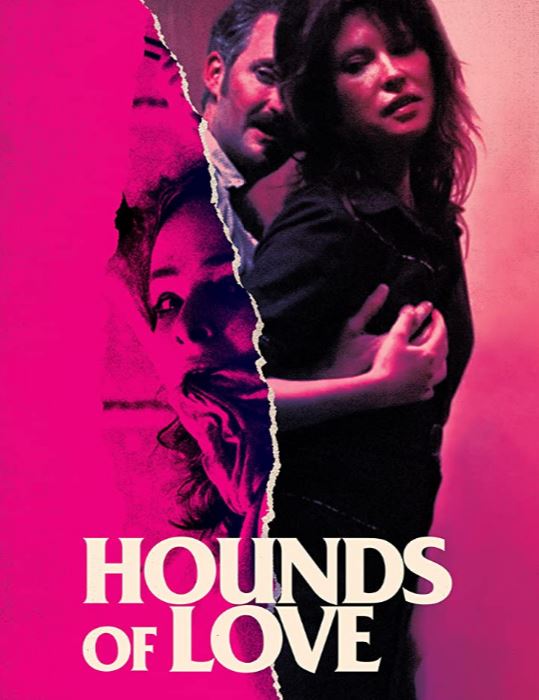
A schoolgirl in Perth sneaks out to go to a party, and is abducted by a couple who imprison and abuse her together. The girl realises she must win the woman’s sympathy before she is killed. The film features award-nominated performances by Stephen Curry and Emma Booth as the couple, as well as Ashleigh Cummings as the schoolgirl. It’s a harrowing debut by Young, and critics praised its skill and the performances, although it only won a single AACTA award (Emma Booth) in a year dominated by Lion. (For further information, see IMDb, Wikipedia, Guardian, Hollywood Reporter, Variety].)
The Nightingale (2019) (Jennifer Kent)

In Tasmania in 1825, Clare (Aisling Franciosi), a 21-year-old Irish convict sets out with a gun and a young Aboriginal tracker Billy (Bykali Ganambarr) to pursue and seek revenge on the three soldiers who killed her husband and baby. Jennifer Kent’s second film is is a powerful, moving and sometimes shocking depiction of the violence that permeated Australia’s colonial era: violence of men against defenceless women, of soldiers against convicts (particularly if they were Irish), and, most shockingly, the genocidal violence of soldiers and settlers against the local Aboriginal peoples. The film deservedly won the AACTA Best Film Award. (For further information, see here.)
Family Fun
Red Dog was the only family film to make it into the top eleven, but there were many other popular family films made in the ‘10s. Here they are, in chronological order:
Paper Planes (2014) (Robert Connolly)

Dylan, a 12-year-old boy in rural WA, is struggling with his depressed father, who lounges around the house following his wife’s recent death. But after Dylan discovers a talent for making paper planes and has the chance to compete at the world championships in Tokyo, his life takes a turn for the better. Sweet and uplifting, this is a film more for children, but many adults will also enjoy it. Ed Oxenbould is the star as Dylan, but Sam Worthington, Deborah Mailman, Terry Norris, Peter Rowsthorn and David Wenham provide good support. (For further information, see IMDb, Wikipedia, Hollywood Reporter, Urban Cinephile, Ozflix])
Oddball (2015) (Stuart McDonald)
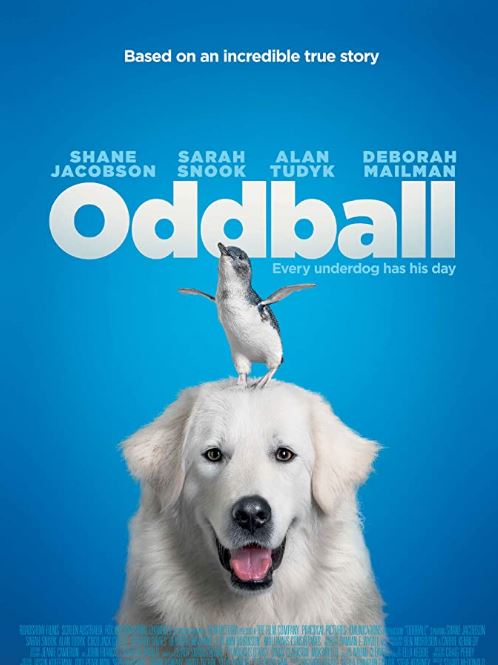
A scruffy chicken-farmer and his wayward dog, Oddball, come to the rescue of a colony of penguins, threatened with decimation by foxes. It’s an amiable yarn, based on a true story, and, like Red Dog and Paper Planes, it was a winner at the box office with children and families. It has a top cast, including Sarah Snook, Alan Tudyk, Shane Jacobson, and Deborah Mailman, but Oddball and the penguins are the real stars of this film. (For further information, see IMDb, Wikipedia, Urban Cinephile, Ozflix)
Girl Asleep (2015) (Rosemary Myers)

A 14 year-old girl fears losing her childhood and becoming an adult like the strange ones in her family. On her 15th birthday, it all gets too much for her. This is a highly inventive coming-of-age story reminiscent of both Muriel’s Wedding and the films of Wes Anderson. Bethany Whitmore is great as Greta, an awkward almost-15-year-old, dealing with school bullies, strange girls who want her in their gang at school, her arguing parents, her rebellious older sister, and the fear of losing all her dear childhood attachments, as she dreams and worries in the privacy of her room. The film captures 70s suburban Australia with its brown and orange furnishings, colourful clothing and 70s music (from disco to the Angels), with more success than Swinging Safari (below). It’s a lot of fun, and suitable for older people too. (For further information, see here.)
Blinky Bill the Movie (2015)
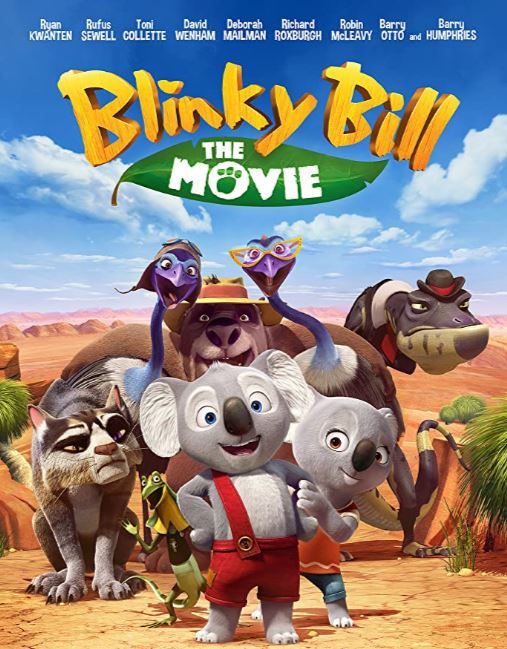
The animated adventures of Blinky Bill, a young koala, who sets off into the outback in search of his father. Together with a girl koala, called Nutsy, and a frill-necked lizard, called Jacko, Blinky encounters all manner of Australia’s native wildlife, as well as few ferals. Based on a popular Australian children’s book and voiced by many Australian stars, the film was moderately successful in Australia, but failed to sell overseas. (For further information, see IMDb, Wikipedia, Urban Cinephile)
Red Dog: True Blue (2016) (Kriv Stenders)

This prequel to the Red Dog film, sees the young dog befriend an 11-boy sent to live with his grandfather on a remote cattle-station in WA’s Pilbarra region. Starring Bryan Brown as the grandfather and Levi Miller as the boy, as well as a loveable red dog (played by a different dog this time), the film is aimed at a younger audience than the first film. (For further information, see IMDb, Wikipedia, Variety, Urban Cinephile, Ozflix)
Dance Academy: The Movie (2017)
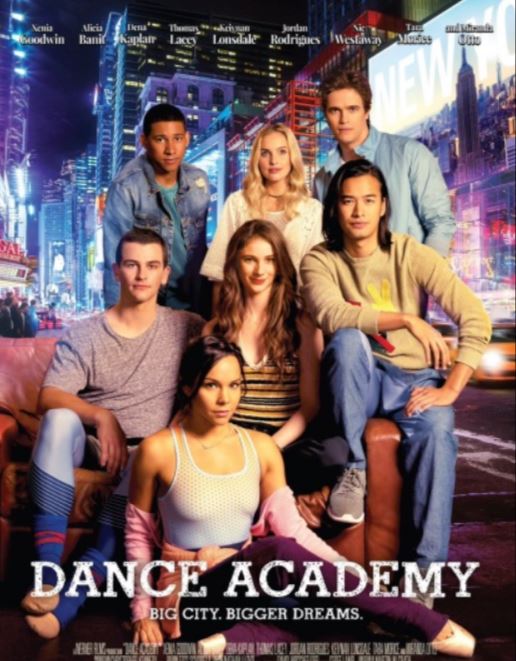
Based on the popular ABC TV series, Dance Academy, this film looks at the struggles and achievements of the young dancers 18 months after they finish their ballet academy. The film moves away from its Sydney roots as some of the dancers try to make it in America. This is a film that will be most appreciated by fans of the series. (For further information, see IMDb, Wikipedia, Guardian, TRB, Blerg)
Storm Boy (2019) (Shawn Seet)

An old man returns to his home-town where he remembers his upbringing on a deserted beach with only his fisherman father, a lone wandering Aboriginal man, and a pelican called Mr Pervical for company. Encouraged by his granddaughter, he is drawn into the local environmental politics. This is the second film based on Colin Thiele’s beloved novel, and an extra story, about the boy’s return to the beach of his childhood 50 years later, has been added to the original story of the lonely boy and his pet pelican. The original 1977 film is a classic, but this film is also satisfying and Geoffrey Rush’s portrayal of the old man is very good. (For further information, see here)
H Is For Happiness (2019) (John Sheedy)

A precocious twelve-year-old girl tries to fix her broken family. Daisy Axon plays Candice Phee, a cheery, red-headed, dictionary-reading, bicycle-riding optimist, who wants to restore the happiness of her mum (Emma Booth) (who can’t get over the cot-death of Candice’s baby brother), and dad (Richard Roxburgh) (who is still angry over business bust-up with his brother, ‘Rich Uncle Brian’). This delightful quirky comedy can be enjoyed by adults and children alike. (For further information, see here)
Best Comedies
There were a number of pure comedies (as opposed to rom-coms, dramedies and horror-coms) made in the 2010s, but it none really took Australia by storm. Here are some of the more significant attempts, in chronological order:
Kings of Mykonos (Wog Boy 2) (2010) (Peter Andrikidis)

A young Australian-Greek man, Steve ‘The Wog Boy’ Karamitsis, inherits a property on the idyllic island of Mykonos, and heads there with his Italian mate. Though he meets a beautiful local woman, he runs into problems with a jealous relative who also wants the property. This creation of actor, Nick Giannopoulos, which also stars Australians Vince Colosimo and Alex Dimitriades, as well as Greek actress Zeta Makrypoulia, is better than the first Wog Boy movie, though it was not as big a hit. The ethnic humour will not appeal to everyone, like the original, but fans should like it. (For further information, see IMDb, Wikipedia, Urban Cinephile, Margaret and David)
Griff the Invisible (2010) (Leon Ford)

An awkward young office-worker tries to be a superhero in the evenings, roaming the streets in a set of colourful tights. Luckily a similarly imaginative girl becomes his girlfriend, and tries to help him achieve invisibility. While it received some positive reviews, public reaction was mixed. (For further information, see IMDb, Wikipedia, Urban Cinephile, Margaret and David.)
A Few Best Men (2011) (Stephan Elliot)

A young Englishman comes to Australia to marry his Australian fiancé. Unfortunately he brings his three mates as best men. This is an Australian/British hybrid gross-out comedy by the writer of Death at a Funeral and the director of Priscilla, Queen of the Desert, and has a British and Aussie cast attending a wedding in Australia. The film has some genuinely funny moments and observations, but also has a fair dose of toilet humour and waltzes along the borderline of Brit-lad tastelessness, so be warned. This was the most successful of the comedies of the ‘10s, and is loved by many and loathed by some. (For further information, see here.)
Mental (2012) (P.J. Hogan)

A non-conformist hitchhiker is hired by a small-town politician as a nanny for his five girls, who all imagine they have mental problems after their mother is sent to an institution. This 2013 follow-up by PJ Hogan to his 1994 Muriel’s Wedding has perhaps too many similarities to his earlier film, but also enough differences to make it enjoyable. (For further information, see here.)
Down Under (2016) (Abe Forsythe)

Following the 2005 Cronulla race riots in Sydney between youths from Sydney’s Lebanese and Anglo-Aussie populations, two carloads of youths from both sides set out to defend their tribe’s turf and honour. Both groups have some fanatics and some half-hearted mates who are badgered into coming along. The film makes fun of both groups and the stupidity of racism, but contains language and violence that might offend some. It’s a brave attempt to bring humour to a difficult topic. (For further information, see here.)
Swinging Safari (2018) (Stephen Elliot)

A comic portrayal of Sydney beach life in the 70s, this film has a tribe of kids running wild while their parents drink too much and dabble in wife-swapping with predictable fallout. The top cast included Radha Mitchell, Guy Pearce, Julian McMahon, Kylie Minogue, Asher Keddie, and Jack Thompson, but they weren’t given enough to work with. There is a lot of fun to be had with the barrage of ideas in this film, but you feel it could have been much more. (For further information, see IMDb, Wikipedia, Urban Cinephile, Cinephilia, The Guardian, Sandra Hall (SMH), Trailer)
The Merger (2018) (Mark Grentell)

An eccentric loner in a small country town agrees to coach the endangered local football team, and decides to include several new refugees in his plans. This film, written by its star, comedian Damian Callinan, is an affectionate, very funny look at small-town Australia, with the interplay of individual eccentricities faced with the challenge of change, in this case the arrival of a group of refugees under a government rural resettlement scheme. (For further information, see here)
Love and/or Sex
There were a number of attempts at romantic films, rom-coms and erotic romances during the decade, with mixed results. There were no real classics, but a few quite interesting films, along with some disappointments. Here are a selection of the best and best-known, in chronological order:
I Love You Too (2010) (Daina Reid)

A man, who is unable to propose to his beautiful long-time girlfriend, is led astray by his dopey mate, but eventually learns some life lessons from a sensitive little guy. Comedian Peter Hellier and actor Brendan Cowell failed to fire in this awkward rom-com, and only American Peter Dinklage hits the mark, while the talented, glamorous women of the film, Yvonne Strahovski and Megan Gale, were not given enough to work with. While it did reasonably well at the box-office, due to Hellier’s TV fame, and Gale’s supermodel glamour, it is not Australian rom-com’s greatest achievement. (For further information, see IMDb, Wikipedia, Urban Cinephile, Margaret and David (3½ and 3 stars respectively).)
Burning Man (2011) (Jonathan Teplitzky)
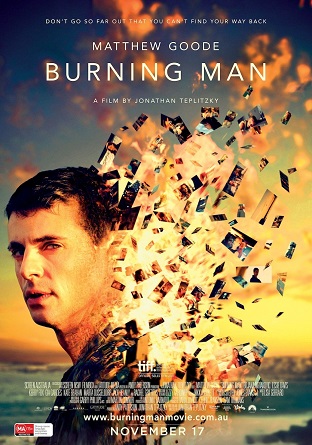
A man with a young son struggles to maintain his life after a tragedy. This is a beautifully filmed, nonlinear narrative about a young cook struggling to find meaning after a tragic event takes away the love of his life. It is an engrossing film, jumping to different times in the man’s life and relationships. English actor, Michael Goode is good as the cook, but is helped by a wonderful collection of Australia’s great actresses who support his character at different times: familiar faces Kerry Fox, Rachel Griffiths, Essie Davis and Marta Dusseldorp are all good, but the less well-known faces are even better, with Bojana Novakovic as the wife, and Kate Beahan as a call-girl. (For further information, see here.)
Any Questions for Ben? (2012) (Rob Sitch)

A successful 27-year-old marketing executive, living a hedonistic lifestyle, suddenly realises that there might be more to life, when he fails to impress a beautiful human-rights lawyer from his old school. The third film by Sitch and the Working Dog team, is far more modern, shiny and chic than their previous films, The Castle and The Dish. However it failed to replicate the success, and divided audiences on age lines, between the under-35s who thought it represented them and their aspirations, and the over-35s who felt it was a lazy attempt at a rom-com. (For further information, see IMDb, Wikipedia, M&D, Urban Cinephile, Ozflix.)
Not Suitable for Children (2012) (Peter Templeman)
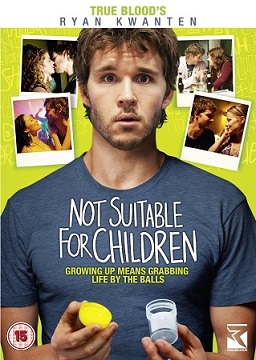
A young Sydney hedonist, who is told he has testicular cancer and has only 3 weeks before he becomes infertile, has to think fast about kids. This film works really well, despite its unexpected premise, due to its smart script and likeable characters. Ryan Kwanten, Sarah Snook and Ryan Corr showed that Australia has a promising new generation of actors. (For further information, see here.)
Adore (2013) (aka Adoration aka Two Mothers) (Joan Fontaine)

Two teenage boys have affairs with each other’s mothers, who also happen to be best friends. Set in an idyllic, affluent beach village, where there is plenty of opportunity for the boys to surf and show off their strong bodies, and for the women to swim and spend the days in bikinis and flimsy dresses, the film concentrates on the emotional aspects of the twin affairs, rather than focusing on the erotic couplings. Featuring big name actors Naomi Watts, Robin Wright, Xavier Samuel, and Ben Mendelsohn, as well having an intriguing taboo subject, this film attracted a lot of interest. The film has a French director and the sensibility of the film will be familiar to viewers of modern French cinema, but not everyone found the film believable. (For further information, see IMDb, Wikipedia, Urban Cinephile, Margaret and David, Rotten Tomatoes.)
The Little Death (2014) (Josh Lawson)

This is an amusing rom-com about five loosely related couples trying to deal with their relationships, sex lives and sexual fantasies. The film covers subjects from rape fantasies to role-playing, and from foot sucking to lacriphilia (becoming aroused when someone cries), but the best section concerns a phone call to a sex-line by a deaf man through an embarrassed sign-language interpreter. It’s generally funny and touching and sometimes insightful on the difficulty of discussing sexual problems. Though not for everyone due to its sometimes frank subject matter, and the lack of a central couple, many will enjoy this. (For further information, see here.)
Holding the Man (2015) (Neil Armfield)
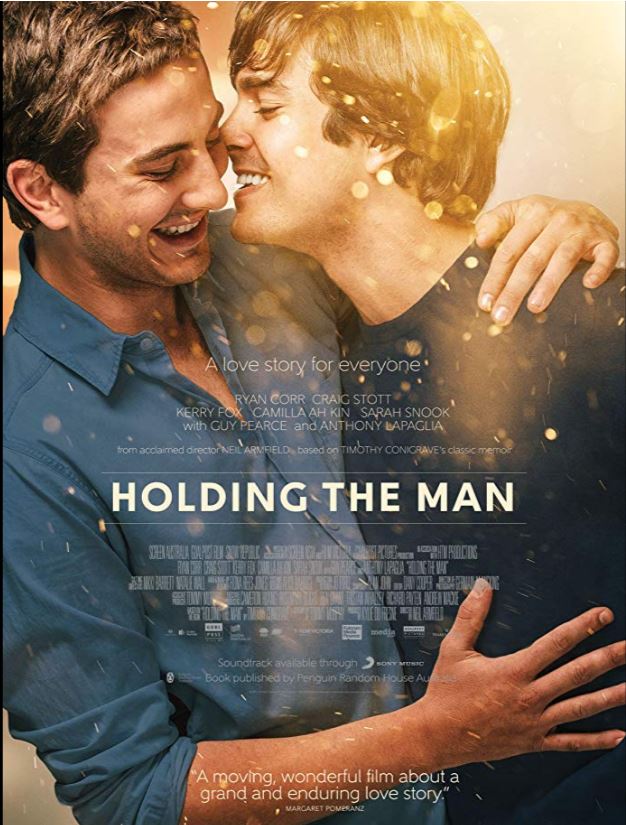
This is a fine adaptation of Timothy Conigrave’s memoir and the stage play about a couple of schoolboys who meet and live together for most of their lives, despite one loving acting and the other loving football. The film captures their joys and sorrows, triumphs and defeats, but above all their love for each other. The lead actors Ryan Corr and Craig Stott are very good, but Australian/NZ greats Kerry Fox, Camilla Ah Kin, Guy Pearce and Anthony LaPaglia are also excellent as the four parents who have various degrees of difficulty accepting their son’s gayness. (For further information, see here.)
Ali’s Wedding (2017) (Jeffrey Walker)

A refreshing ethnic rom-com from writer-actor Osamah Sami which depicts the life of a young Shia Iraqi-Australian boy who ends up in a heap of trouble when he lies about his HSC result to avoid disappointing his father. He then falls in love with a Sunni Lebanese-Australian girl rather than the girl chosen for him from his own community. (For further information, see here.)
A Thrill A Minute: The Best Action, Sci-Fi, Thrillers and Horror Films
While Mad Max: Fury Road made the most money for an Australian action film, and Snowtown, The Babadook, The Rover and Hounds of Love (see above) won the awards for Horror-Thrillers, there were many more action, horror and sci-fi-thrillers made in the decade. The following films won the most attention, from either the box-office, the critics, or the online fans. There are two war films, two surfing films, two crime-action films, a horror-slasher, a zombie flick, and a sci-fi thriller. Here they are, in chronological order:
Beneath Hill 60 (2010) (Jeremy Sims)

The true story of Oliver Woodward, one of a team of Australian miners who fought on the Western Front in WW1, digging a tunnel to plant explosives under the German lines. This is a gripping account of Australians at war, this time in the claustrophobic environment of tunnels under the front lines of the Western Front. The film captures the urgency and danger of war better than any other Oz film since Gallipoli. The cinematography is excellent and all the actors in this ensemble drama do a great job, particularly Brendan Cowell as Woodwood. (For further information, see here.)
Drift (2013)

A surfing action film about two brothers in the 70s who love surfing and give up their straight jobs to make surfboards and wetsuits. They battle conservative townspeople and bikie drug-dealers to find success. Sam Worthington, Xavier Samuel and Myles Pollard star in this film noted for its surfing fine action photography. (For further information, see IMDb, Wikipedia, SBS, M&D, Urban Cinephile, Trailer)
Wolf Creek 2 (2014) (Greg McLean)

The evil bushman Mick Taylor (played by John Jarrett) continues to prey on wary travellers who venture into the outback. This sequel to Wolf Creek is even more violent than the first film, but was less successful at the box office. (For further information, see IMDb, Wikipedia, , Ebert, Urban Cinephile, Ozflix).
Son of a Gun (2014)
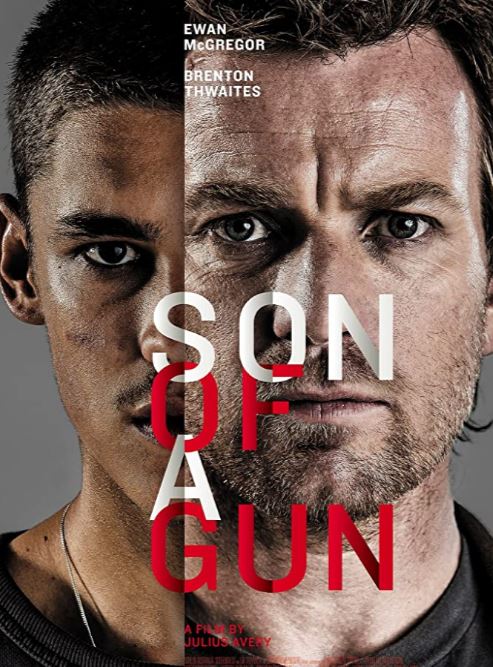
This crime thriller, about a young man whose short stay in prison entangles him with a network of dangerous criminals who force him to help them in a series of robberies, stars high-profile foreign actors Ewan McGregor, and Alicia Vikander, as well as Australians Brenton Thwaites, Matt Nable, Damon Herriman, and Nash Edgerton. Popular with many critics, though not widely-known due to its poor box-office. (For further information, see IMDb, Wikipedia, M&D, Urban Cinephile).
Breath (2017) (Simon Baker)

Two teenage boys in a tiny town befriend an experienced surfer who helps them overcome their fears, but exposes them to increasingly risky situations. Based on a Tim Winton novel, this is not the bright, sunny California or Byron Bay type of surf film, as the Southern Ocean is dark and wild, and often threatens to crush the unwary surfer on the rocks or drag him down to the depths. The boys learn how to live through the the challenge of surfing, but also find it difficult to cope with life away from the surf. (For further information, see here).
Cargo (2017)

Following a zombie apocalypse, a man treks across the outback with his family, trying to fight off attacks by zombies and other desperate humans. He teams up with a young Aboriginal girl as the situation becomes more dire. English actor Martin Freeman stars in this much-praised horror flick, and is joined by Australian newcomer Simone Landers, as well as experienced Australian actors Anthony Hayes, Susie Porter, and David Gulpilil. (For further information, see IMDb, Wikipedia, TRB, RSC).
Danger Close: The Battle of Long Tan (2019) (Kriv Stenders)

A company of Australian soldiers comes under heavy attack from Viet Cong troops at the Battle of Long Tan in South Vietnam in 1966, and is forced to fight its way out against heavy odds. This is one of a very few Australian attempts at an actual war film, and succeeds in depicting the heroism of young Australian soldiers fighting in very difficult conditions in an war that would soon become unpopular. (For further information, see IMDb, Wikipedia, Curb, SMH, SFF, Trailer)
True History of the Kelly Gang (2019) (Justin Kurzel)
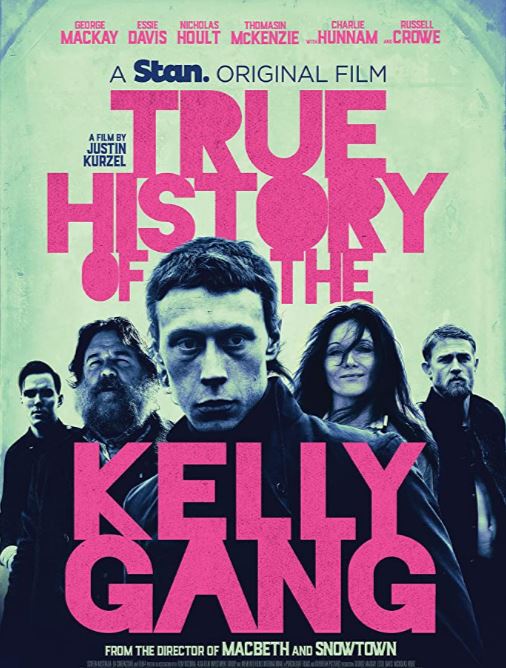
Ned Kelly, one of a family of poor Irish farmers in Victoria, grows up as his family is persecuted by the local police, and eventually becomes a bushranger and robber. This film is an alternative retelling of the Ned Kelly legend, replete with lots of style, rock music, violence, rebellion and cross-dressing. The film features wonderful performances by George MacKay, Essie Davis, Nicholas Hoult, Charlie Hunnam, and Russell Crowe. (For further information, see here).
I Am Mother (2019) (Grant Sputore)
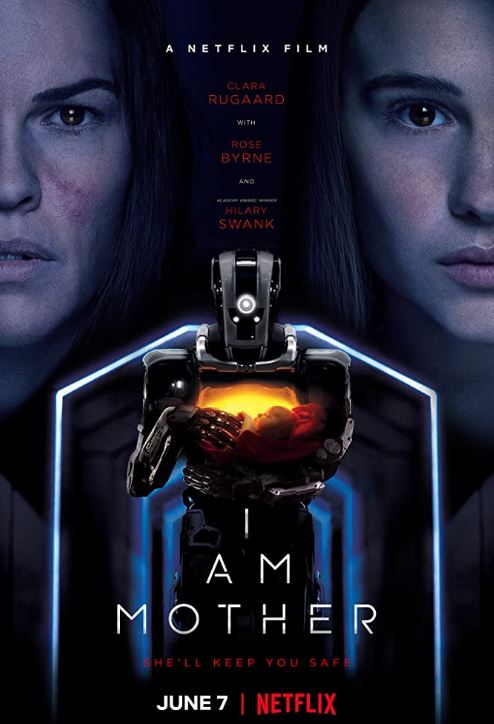
‘Daughter’, a girl in a post-apocalyptic bunker, is being raised by Mother, a robot aiding the re-population of Earth. But a strange visitor disrupts the process. This sci-fi thriller stars Clara Rugaard, Luke Hawker, Rose Byrne, and Hilary Swank, and has been praised as an intelligent, suspenseful success. (For further information, see IMDb, Wikipedia, Ebert, Variety).
There were many other sci-fi and horror-thrillers made in the decade – see the section ‘What About?’ at the end for a list of the most popular.
Best Dramas
‘Dramas’ is a bit of catch-all category, but the films here are generally serious and realistic, though some also include humour and conflict. These films look at how people think, act and interact in real world situations (although one film included here has some fantasy elements, but it is included here since it is not a thriller). Here they are, in chronological order:
Oranges and Sunshine (2010) (Jim Loach)

In the 1980s, Margaret Humphreys, a British social worker discovered that thousands of poor British children were sent to Australia (and NZ and Canada) in the decades following World War 2, without the knowledge of the public or even the children’s parents. Many of these children were exploited in Australian orphanages where they were overworked, underfed and exposed to physical or sexual violence, all of which left deep scars later in their lives. The film shows how this scandal was exposed and some families reunited. This is a combined British-Australian film set in both Britain and Australia with enough major Australian characters, played by Australian actors, to be included in my list of Australian films (though the British component is greater, with a British writer, a British director and Emily Watson as the main character). Watson’s quiet strength carries the film, but Australian actors Hugo Weaving and David Wenham, as two of the grown-up children seeking the truth about themselves, lend poignancy to the story. (For further information, see here.)
Eye of the Storm (2011) (Fred Schepisi)

This is an excellent adaptation of one of Australian Nobel Prize-winning author Patrick White’s best novels. A rich old woman (Charlotte Rampling), who nearing death, continues to torment her two middle-aged children (Geoffrey Rush and Judy Davis) who are waiting for her inheritance. The film is characterised by White’s psychological understanding of the bitterness, jealousy, resentment and cruelty which can exist within families, and how age does not always help people transcend these qualities, but can even accentuate them. The trio of top actors and the veteran director make this an engrossing film. (For further information, see here.)
The Hunter (2011) (Daniel Nettheim)

William Defoe plays a hunter sent to find the last Tasmanian Tiger and kill it for a European biotech company. He finds himself caught between the woodcutters, the environmentalists, the widow of his predecessor and someone who is watching him as he roams the Tasmanian wilderness laying traps for an animal that may no longer exist. This is an interesting eco-thriller, set in the vast Tasmanian wilderness of wet forest and heath country. (For further information, see here.)
Wish You Were Here (2012) (Kieran Darcy-Smith)

This is a gritty Australian film about how drink, drugs, bogans, and Southeast Asia can be a deadly mix. I found it realistic but pretty tough going and a bit violent for my taste. Antony Starr won the AACTA Best Supporting Actor Award for his performance. (For further information, see IMDb, Wikipedia, M&D, Urban Cinephile)
The Turning (2013) (17 Directors)
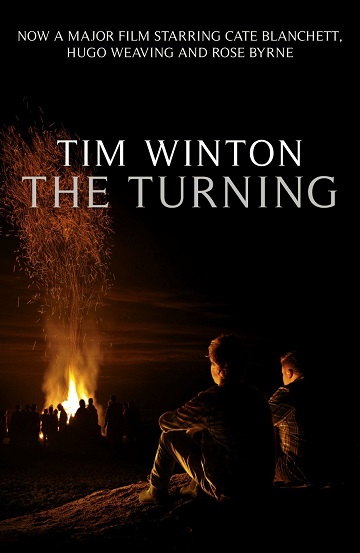
The film includes 17 short films by 17 directors based on Tim Winton’s book The Turning. The stories are set in coastal areas of WA and Perth, and are about a variety of characters struggling to change. The stories are mostly not related to each other, though a few follow the same characters at different times of their lives. As a 3-hour epic, the film is inevitably uneven, as some stories are better than others, but it is an interesting overview of Australian life, and worth seeing for the array of our best actors. Rose Byrne won the AACTA Best Actress Award for this film. (For further information, see here)
Tracks (2014) (John Curran)

This is a remarkable and engaging story of a young woman eschewing society for 8 months in the desert with four delightful camels and her dog, Diggity. It’s a remarkable portrait of this determined solitary woman, and Mia Wasikowska gives an outstanding performance. The film is based on the true story of Robyn Davidson’s 1,700 mile trek across the deserts of Western Australia from Alice Springs to the Indian Ocean. American Adam Driver is good as a supporting presence. (For further information, see here.)
Last Cab to Darwin (2015) (Jeremy Sims)

Rex, a taxi driver dying of cancer, takes a road trip to Darwin to seek the help of a euthanasia advocate, but reassesses his life on the trip. It has some memorable performances from Michael Caton as Rex, Ningali Lawford-Wolf as Polly, his Aboriginal neighbour and unacknowledged lover for many years, and Mark Coles Smith, as a garrulous young Aboriginal man from Oonadatta, escaping debts and hoping to become a footballer, who joins Rex on the trip. It’s another excellent film about dealing with cancer (Oz seems to be specialising in these a bit), but more importantly about love, racism and race relations in outback Australia. (For further information, see here)
The Daughter (2016) (Simon Stone)

The return of a rich man’s son to a small town for his father’s second marriage brings up hidden secrets and dramas which threaten his father’s and his best friend’s marriages. This is the second and more ambitious attempt to adapt Henrik Ibsen’s tragic play, The Wild Duck, to an Australian setting, and while it has some problems, it is thought-provoking. Set in the misty forests of Tumut in the foothills of the Snowy Mountains, the film has a dark, Scandinavian ambience. It has a wonderful cast of Australia’s best actors and Odessa Young and Miranda Otto won AACTA awards for the Best Actress and Best Supporting Actress of 2016. Sam Neill also gives an excellent performance. (For further information, see here.)
The Death and Life of Otto Bloom (2016) (Cris Jones)

Otto Bloom is man who remembers only his future, but not his past. When he is young, he knows what will happen to him, but as he goes through life, he forgets all that he has experienced. This is distressing for those who know him, and particularly those who love him. This is an intriguing film with a clever script and excellent performances by Xavier Samuel as Otto, and Rachel Ward, as his therapist/lover. (For further information, see here)
Pawno (2016) (Paul Ireland)

A highly enjoyable film about life at the low end of town in Melbourne’s western suburbs. The film revolves around the staff and customers in a grotty little pawn shop in Footscray, where people come in desperate for money, or looking for a bargain or just to chat and pass the time. Outside a variety characters hang around trying to generate a little fun or excitement to pass the time. A very good film from first time director and writer. (For further information, see here)
Most Popular Australian films that don’t look Australian
Australian directors also made many films about people from other countries (mainly America), including many of the biggest ‘Australian’ films of the decade. Even when directed, written, and/or produced by Australians, and even when Australian actors featured prominently, these films look like Hollywood productions, and the accents are American (or occasionally British). While many of these were fine films, and many were certainly very successful, they don’t tell the world stories about Australia or Australians (see here), and so they are included together in this section. We salute the Australian directors, writers, actors, producers etc. who made these films, but while they support the local film industry, they don’t really advance Australian film culture.
So this section includes films in three categories:
- Australian productions and co-productions, made in Australia, but set overseas;
- Foreign productions made in Australia with an Australian director and some Australian actors, but set overseas;
- Australian productions (and co-productions) set and made overseas.
So here are twenty of the most interesting of these films, presented in order of the groups above, and then their success/popularity:
1. Australian productions and co-productions, made in Australia, but set overseas
This group of films were the creations of Australian directors and producers, who made films at home, but aimed mainly at the international market.
The Great Gatsby (2013) (Baz Luhrmann)
Baz Luhrmann produced, directed and co-wrote the screenplay for this adaptation of the F. Scott Fitzgerald classic of 1920s America. The film was made in various locations around Sydney using a mix of American, Australian and British actors and was a big success, making US$350 million, but dividing critics. The film also won the AACTA (Australian Academy of Cinema and Television Arts) Best Film Award, Luhrmann won the AACTA Best Director Award, and American Leonardo DiCaprio won the AACTA Best Actor Award (with the film’s Australian actors Joel Edgerton and Elizabeth Debicki winning the two Best Supporting Actor awards). (For further information, see IMDb, Wikipedia, M&D, Urban Cinephile.)
Predestination (2014) (Spierig brothers)
This tale of time travel was written, directed and produced by the Australian Spierig brothers, and was made in Melbourne using American and Australian actors. But the characters were American, and the story took place in the US. (For further information, see IMDb, Wikipedia, M&D, Urban Cinephile)
Hacksaw Ridge (2016) (Mel Gibson)
Hacksaw Ridge is a US-Australian co-production, directed by an American who lived for about 15 years in Australia, Mel Gibson. The film, about a US pacifist who served as a medic in the Pacific during World War Two, was filmed entirely in Australia, but the story, writers and most of the principal actors were American (with a number of Australians in support roles). Nevertheless, the film also won the AACTA (Australian Academy of Cinema and Television Arts) Best Film Award, Gibson won the AACTA Best Director Award, and British-American Andrew Garfield won the AACTA Best Actor Award (with Australian Hugo Weaving winning the Best Supporting Actor award). (For further information, see IMDb, Wikipedia, Variety, UC)
Happy Feet Two (2011) (Dr George Miller)
Australia’s George Miller’s sequel to his animated Happy Feet success, was an all-Australian production, with Miller writing and producing the film in Australia with other Australians. But most of the penguins spoke with American accents, and the film had little recognisably Australian about it. (For further information, see IMDb, Wikipedia, M&D, Urban Cinephile)
Jungle (2017) (Greg McLean)
Australian director Greg McLean filmed most of this film in Queensland, but the film is about an Israeli in Brazil. Part of the finance was Australian but the screenplay was by an American (based on the Israeli book) and the principal actor was English, though a number of Australian had supporting roles. (For further information, see IMDb, Wikipedia, Roger Ebert, Variety)
Hotel Mumbai (2018) (Anthony Maras)
This story of the 2008 Mubai terror attack is an Australian-American-Indian co-production. Written by an Australian-based Scottish screenwriter, directed by an Australian, the film was made mainly in Australia, as well as India. But it’s an Indian story with more Indian, British and US actors than Australians. (For further information, see IMDb, Wikipedia, Guardian, Variety, ABC)
Winchester (2018) (Spierig brothers)
The Australian Spierig brothers were hired to direct this historical drama about the widow of the Winchester gun manufacturer. Helen Mirren played the lead role, with Australians Jason Clarke, Sarah Snook, and others in support. The film was filmed mainly in Melbourne, as well as the US. (For further information, see IMDb, Wikipedia, Variety, NYT)
One Less God (2017) (Lliam Worthington)
Australian Lliam Worthington wrote and directed this story about the 2008 terror attack on a Mumbai tourist hotel. Though set in India, it was mainly filmed in NSW. (The bigger budget Hotel Mumbai above concerns the same incident). (For further information, see IMDb, Rotten Tomatoes)
2. Foreign Productions made in Australia with an Australian director and some Australian actors, but set overseas.
This group of films were foreign productions (or co-productions dominated by the overseas partner), which hired an Australian director to make the film about an overseas story. Here are some of the better-known, in chronological order.
The Railway Man 2013/4) (Jonathan Teplitzky)
The Railway Man is a British-Australian co-production, about a British POW Thailand in WW2 and later in Britain. The director was Australian, and the film was partly filmed in Queensland, but the story, writers and most of the producers are British. Nicole Kidman was the only Australian actor in a major role. Nevertheless, the film was nominated for several AACTA awards. (For further information, see IMDb, Wikipedia, M&D, Urban Cinephile)
I, Frankenstein (2014) (Stuart Beattie)
This American production, based on a US fantasy comic-book about Frankenstein’s monster’s fight against evil demons, was directed by Australian director Stuart Beattie, who co-wrote the screenplay. It was filmed in Melbourne using US, British and Australian actors. (For further information, see IMDb, Wikipedia, Variety, Guardian)
Gods of Egypt (2017) (Alex Proyas)
Australian Alex Proyas directed this fantasy action film, making it in Sydney with a mix of Australian and foreign actors. But the film was an American production, with US writers, and the story concerned Ancient Egypt. (For further information, see IMDb, Wikipedia, Variety, Urban Cinephile)
Aquaman (2018) (James Wan)
Australian director James Wan (most of whose career has been in the US) was chosen to make this US superhero film, and decided to make the film in Australia. Most of the film was made in Queensland, with some overseas filming in other countries. The film contains few Australian actors and is basically a US creation. Like most superhero films, it made a truckload of cash. (For further information, see IMDb, Wikipedia)
(Peter Rabbit (2018) (Will Gluck) is a US/Australian co-production of the classic English children’s story, which was filmed in Sydney using mainly Australian actors, with a mix of English, Irish and New Zealand actors. The director, producers and writers (apart from Beatrix Potter) were all American. Nevertheless, this successful film is often claimed as Australian, or at least part-Australian, by Screen Australia who contributed money. )
3. Australian productions (and co-productions) set and made overseas
A number of Australian directors went overseas to make stories about people in other countries, including Germany, Laos, Vanuatu, Ireland, England and the USA. Here are some of the better-known, in chronological order.
Lore (2013) (Cate Shortland)
Lore is a German-British-Australian co-production about five German children in WW2 Germany and was based on a story by a British author. Australian director Cate Shortland co-wrote the screenplay, but the film was made in Germany, using mainly German actors and in the German language. It is only sometimes listed as Australian due to its Australian finance. (For further information, see IMDb, Wikipedia, M&D, Urban Cinephile)
The Rocket (2013) (Kim Mordaunt)
Australian Kim Mordaunt wrote and directed this film about a young Lao boy trying to prove himself in a war-torn country. The film was made in Laos and Thailand with local actors. (For further information, see IMDb, Wikipedia, M&D, Urban Cinephile)
Boy Erased (2018) (Joel Edgerton)
Australian Joel Edgerton directed, and wrote the screenplay for, this Australian-US co-production about an American pastor with a gay son. The film starred American actors plus Nicole Kidman, Russell Crowe, and Joel Edgerton, but was filmed in Georgia (USA) and is an American story. (For further information, see IMDb, Wikipedia)
Tanna (2015) (Martin Butler, Bentley Dean)
Australian directors Martin Butler and Bentley Dean wrote and directed this story of two Vanuatan teenagers who try to go against their traditional arranged marriage customs. The film was made in Vauatu with all Vanuatan actors. (For further information, see IMDb, Wikipedia, Variety, Urban Cinephile)
Gringo (2018) (Nash Edgerton)
Australian Nash Edgerton directed this American action story of Americans solving a kidnap in Mexico. Though the film was part-produced by Australians, the Americans had the controlling interest. This film was made in the US and Mexico with mainly US actors. (For further information, see IMDb, Wikipedia)
The King (2019) (David Michôd)
Director Michod and fellow Australian Joel Edgerton adapted Shakespeare’s Henry IV, Parts 1 & 2 and Henry V, for Warner Bros. Pictures. The film was an Australian-US co-production and filmed in Europe with a mix of Australian, American, British and French actors. (For further information, see IMDb, Wikipedia)
Animals (2019) (Sophie Hyde)
Australian director Sophie Hyde directed this story by an English writer about two single women sharing a flat in Dublin. The film was made in Ireland with English, Irish and American actors, though some finance made this an Australian-Irish co-production. (For further information, see IMDb, Wikipedia, Guardian, Variety)
What About …?
So obviously I left out a lot of films that were made in the decade – almost 90% in fact!
There were a group of films that were popular with the critics, that I didn’t manage to include. The most commonly mentioned are:
The Infinite Man (2014), 52 Tuesdays (2013), Acute Misfortune (2018), Healing (2014), Killing Ground (2016), The Mule (2014), Wasted on the Young (2010), Looking for Grace (2015), Strange Colours (2018), Terror Nullius (2018), Hearts and Bones (2019), Face to Face (2010), Emu Runner (2018), Red Hill (2010), South Solitary (2010), Don’t Tell (2017), Felony (2013), Mother Fish (2010), Slam (2018), and Cut Snake (2014).
There were another group that were popular with voters at IMDb, who tend to favour sci-fi and horror flicks ignored by cinemas and critics. They voted for:
- These horror-thrillers (and sci-fi thrillers, and horror-comedies): Better Watch Out (2016), Kill Me Three Times (2014), The Tunnel (2011), 2:22 (2017), The Reef (2010), Bait (2012), Wyrmwood: Road of the Dead (2014), These Final Hours (2013), Infini (2015), OtherLife (2017), Occupation (2018), Backtrack (2015), Little Monsters (2019), Killing Ground (2016), The Osiris Child (2016), The Clinic (2010), Terminus (2015), Primal (2010), Felony (2013), The Gateway (2018), Partisan (2015), Patrick (2013), 100 Bloody Acres (2012), Road Train (2010), Arctic Blast (2010), Cage Dive (2017), Boys in the Trees (2016), and Charlie’s Farm (2014);
- These action films: John Doe: Vigilante (2014), and Red Hill (2010);
- These erotic thrillers: Sleeping Beauty (2011), and X: Night of Vengeance (2011);
- And these dramas: Strangerland (2015), The Tree (2010), and One Eyed Girl (2013).
Critics’ 50 top-rated Australian films of the 2010s
My survey of 19 different sources (Australian critics and websites), who have rated Australian films from 0 to 5 stars, produced this list of the average ratings for 2010s films:
Film (Year) Director [Ratings ] Average Rating
- Animal Kingdom (2010) David Michôd [6] 4.25
- Burning Man (2011) Jonathan Teplitzky [6] 4.17
- Snowtown (2011) Justin Kurzel [4] 4.13
- Oranges and Sunshine (2010) Jim Loach [5] 4.10
- Hounds of Love (2016) Ben Young [7] 4.00
- Sweet Country (2018) Warwick Thornton [10] 4.00
- Acute Misfortune (2018) Thomas M. Wright [5] 3.90
- True History of the Kelly Gang (2019) Justin Kurzel [5] 3.90
- The Hunter (2011) Daniel Nettheim [4] 3.88
- The Sapphires (2012) Wayne Blair [8] 3.88
- Hotel Mumbai (2018) Anthony Maras [4] 3.88
- Ladies in Black (2018) Bruce Beresford [8] 3.88
- Mystery Road (2013) Ivan Sen [9] 3.83
- Last Cab to Darwin (2015) Jeremy Sims [7] 3.79
- Holding the Man (2015) Neil Armfield [9] 3.78
- Mad Bastards (2010) Brendan Fletcher [6] 3.75
- The Babadook (2014) Jennifer Kent [6] 3.75
- Mad Max: Fury Road (2015) George Miller [8] 3.75
- Charlies Country (2013) Rolf de Heer [11] 3.73
- Red Dog (2011) Kriv Stenders [7] 3.71
- Beneath Hill 60 (2010) Jeremy Sims [6] 3.67
- Face to Face (2010) Michael Rymer [4] 3.63
- Lion (2017) Garth Davis [8] 3.63
- Emu Runner (2018) Imogen Thomas [4] 3.63
- Strange Colours (2018) Alena Lodkina [5] 3.60
- Eye of the Storm (2011) Fred Schepisi [6] 3.58
- Tracks (2014) John Curran [7] 3.57
- The Daughter (2016) Simon Stone [8] 3.56
- Cargo (2017) Ben Howling, Yolanda Ramke [8] 3.56
- The Nightingale (2018) Jennifer Kent [8] 3.56
- The Infinite Man (2014) Hugh Sullivan [10] 3.55
- Red Hill (2010) Patrick Hughes [5] 3.50
- South Solitary (2010) Shirley Barrett [5] 3.50
- Toomelah (2011) Ivan Sen [4] 3.50
- Satellite Boy (2012) Catriona McKenzie [5] 3.50
- 52 Tuesdays (2013) Sophie Hyde [10] 3.50
- Tanna (2015) Martin Butler, Bentley Dean [5] 3.50
- Goldstone (2016) Ivan Sen [9] 3.50
- Don’t Tell (2017) Tori Garrett [5] 3.50
- Upgrade (2018) Leigh Whannell [4] 3.50
- Not Suitable for Children (2012) Peter Templeman [7] 3.43
- Tomorrow When The War Began (2010) Stuart Beattie [5] 3.40
- Predestination (2014) Spierig brothers [10] 3.40
- Partisan (2015) Ariel Kleiman [5] 3.40
- The Light Between The Oceans (2016) Derek Cianfrance [5] 3.40
- Jirga (2018) Benjamin Gilmour [5] 3.40
- H Is For Happiness (2019) John Sheedy [5] 3.40
- Healing (2014) Craig Monahan [9] 3.39
- The Little Death (2014) Josh Lawson [9] 3.39
- Lou (2010) Belinda Chayko [4] 3.38
Ozflicks Favourite films of the 2010s
Just to compare, here are my 50 favourite films of the decade:
- Sweet Country (2018) (Warwick Thornton)
- The Dressmaker (2015) (Jocelyn Moorhouse)
- The Nightingale (2018) (Jennifer Kent)
- The Sapphires (2012) (Wayne Blair)
- Burning Man (2011) (Jonathan Teplitzky)
- Mystery Road (2013) (Ivan Sen)
- Animal Kingdom (2010) (David Michôd)
- Eye of the Storm (2011) (Fred Schepisi)
- Mad Max: Fury Road (2015) (George Miller)
- The Hunter (2011) (Daniel Nettheim)
- Ali’s Wedding (2017) (Jeffrey Walker)
- Goldstone (2016) (Ivan Sen)
- Not Suitable for Children (2012) (Peter Templeman)
- Oranges and Sunshine (2010) (Jim Loach)
- Jasper Jones (2017) (Rachel Perkins)
- Charlies Country (2013) (Rolf de Heer)
- Ladies in Black (2018) (Bruce Beresford)
- Ride Like a Girl(2019) (Rachel Griffiths)
- Lion (2016) (Garth Davis)
- Mental (2012) (P.J. Hogan)
- South Solitary (2010) (Shirley Barrett)
- Satellite Boy (2012) (Catriona McKenzie)
- The Daughter (2016) (Simon Stone)
- Tracks (2014) (John Curran)
- The Little Death (2014) (Josh Lawson)
- Girl Asleep (2015) (Rosemary Myers)
- Holding the Man (2015) (Neil Armfield)
- Healing (2014) (Craig Monahan)
- The Death and Life of Otto Bloom(2016) (Cris Jones)
- H Is For Happiness (2019) (John Sheedy)
- The Turning (2013) (17 Directors)
- Storm Boy (2019) (Shawn Seet)
- The Merger (2018) (Mark Grentell)
- Mad Bastards (2010) (Brendan Fletcher)
- Pawno (2016) (Paul Ireland)
- The Broken Shore (2013) (Rowan Woods)
- Last Cab to Darwin (2015) (Jeremy Sims)
- West of Sunshine (2017) (Jason Raftopoulos)
- Red Dog (2011) (Kriv Stenders)
- The Water Diviner (2014) (Russell Crowe)
- Tomorrow When The War Began (2010) (Stuart Beattie)
- Broke (2016) (Heath Davis)
- True History of the Kelly Gang (2019) (Justin Kurzel)
- The Butterfly Tree (2017) (Priscilla Cameron)
- The Light Between The Oceans (2016) (Derek Cianfrance)
- Down Under (2016) (Abe Forsythe)
- William Kelly’s War (2014) (Geoff Davis)
- A Few Best Men (2011) (Stephan Elliot)
- 52 Tuesdays (2013) (Sophie Hyde)
- Mabo (2012) (Rachel Perkins)
Domestic Box Office Figures for 2010s Australian Movies – the Top 50
This list contains both Australian films which look Australian, and those made here. The first dollar figure is in dollars when the film was released; the second dollar figure is in 2019 Dollars (adjusted for Inflation). The list is in order of 2019 Australian dollars.
Real Rank – Title (Year) – Box office (AUD) – (Original Rank ) – Box Office in 2019 Dollars
- Lion (2017) 29,523,559 (5) $29,523,559
- The Great Gatsby (2013) 27,383,762 (7) $28,752,950
- Peter Rabbit (2018) $ 26,750,712 (8) $26,750,712
- Red Dog (2011) 21,467,993 (12) $23,614,792
- Mad Max: Fury Road (2015) 21,685,344 (11) $21,902,197
- The Dressmaker (2015) 20,271,661 (13) $20,474,378
- The Water Diviner (2014) 15,869,909 (17) $16,346,006
- The Sapphires (2012) 14,534,474 (20) $15,697,232
- Tomorrow When the War Began (2010) 13,510,000 (21) $15,266,300
- Ladies in Black (2018) $ 11,952,234 (24) $ 11,952,234
- Happy Feet Two (2011) 10,694,917 (31) $11,764,409
- Ride Like a Girl (2019) $ 11,577,871 (26) $ 11,577,871
- Oddball (2015) 11,085,092 (26) $11,195,943
- Paper Planes (2015) 9,654,965 (32) $9,751,515
- Hacksaw Ridge (2016) 8,857,936 (34) $8,857,936
- The Railway Man (Australia/UK) (2013) 7,285,409 (48) $7,649,679
- Last Cab to Darwin (2015) 7,401,374 (46) $7,475,388
- Red Dog: True Blue (2016) 7,384,663 (47) $7,384,663
- Kath & Kimderella (2012) 6,081,439 (50) $6,567,954
- A Few Best Men (2012) 5,296,692 (58) $5,720,427
- Animal Kingdom (2010) 5,000,018 (62) $5,650,020
- Kings of Mykonos: The Wog Boy 2 (2010) 4,896,315 (63) $5,532,836
- Legend of the Guardians: The Owls of Ga’Hoole (2010) 4,783,037 (65) $5,404,832
- Top End Wedding (2019) $ 5,278,971 (61) $ 5,278,971
- Storm Boy (2019) $ 4,984,445 (67) $ 4,984,445
- Wolf Creek 2 (2014) 4,732,168 (72) $4,874,133
- Breath (2018) $ 4,633,230 (74) $ 4,633,230
- Palm Beach (2019) $ 4,502,974 (76) $ 4,502,974
- Mental (2012) 4,080,835 (75) $4,407,302
- Sanctum (2011) 3,871,962 (78) $4,259,158
- Oranges and Sunshine (Australia/UK) (2011) 3,848,486 (80) $4,233,335
- Beneath Hill 60 (2010) 3,220,187 (88) $3,638,811
- Hotel Mumbai (2019) $ 3,295,499 (93) $3,295,499
- The Cup (2011) 2,749,218 (105) $3,024,140
- Blinky Bill the Movie (2015) 2,908,162 (101) $2,937,244
- I Love You Too (2010) 2,365,467 (124) $2,672,978
- Tracks (2014) 2,443,817 (119) $2,517,132
- Jasper Jones (2017) 2,489,883 (114) $2,489,883
- Sweet Country (2018) $ 2,027,113 (140) $ 2,027,113
- Dance Academy: The Movie (2017) 2,001,047 (137) $2,001,047
- The Eye of the Storm (2011) 1,686,427 (151) $1,855,070
- Goddess (2013) 1,759,081 (149) $1,847,035
- The Daughter (2016) 1,752,633 (150) $1,752,633
- Any Questions for Ben? (2012) 1,504,396 (171) $1,624,748
- Swinging Safari (2018) $ 1,617,542 (180) $ 1,617,542
- Wish You Were Here (2012) 1,443,991 (175) $1,559,510
- Housos Vs Authority (2012) 1,360,703 (182) $1,469,559
- The Turning (2013) 1,248,511 (191) $1,310,937
- Return to Nim’s Island (2013) 1,220,248 (194) $1,281,260
- Snowtown (2011) 1,034,722 (214) $1,138,195
So, that’s the end of my survey of Oz movies of the ’10s. How about you? What were your favourites for the 2010s? (Feel free to add a comment)
Further Reading:
The 100 Best Australian Films Of The New Millennium (Filmink 2016) A rare ranked list of Australian films (from 2000 to 2016)
The 25 greatest Australian films of the 21st century (Flicks 24 July 2018) Another ranked list of the top Australian films (2000-2018)
The 100 Greatest Australian Films of All Time: Part 5 (2005-2014) (James Curnow, Curnblog, May 2015)
I love your long and comprehensive reviews of Australian movies…I have now added to my list some great movies that escaped my attention that I need to watch!
LikeLiked by 2 people
Thanks Athena. It’s easy to miss films when there’s so much else in life. I think there should be something for most people in the list above, though I’ll let someone else examine all the horror films that are being made – I scare easily! Killing Eve is about my limit.
I hope you are somewhere comfortable during this strange time. I couldn’t get back to Greece, but am back home on the mid-North Coast with my sister, which is good too. Cheers
LikeLike
What a great reference catalogue!!!! Thank you so much for all this work!!!
Very precious!!
I watched “lion” the other day on one of the ert channels ! So good to see something throwing some light on the topic! I always wondered..!! Hope you’re both doing well and enjoying the exotic paradise!!! Sas perimeno syndoma!!!! Polla polla polla filakia xxxx
LikeLiked by 1 person
Thanks Joanna. Lion is very good, especially on India, but on the situation of adopted kids generally, who wonder about their real parents. The page is a bit long, but I expect people will look for films or genres they like. Thanks for reading, and commenting! Cheers
LikeLike